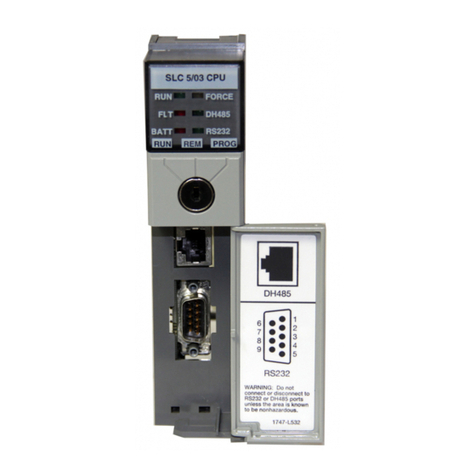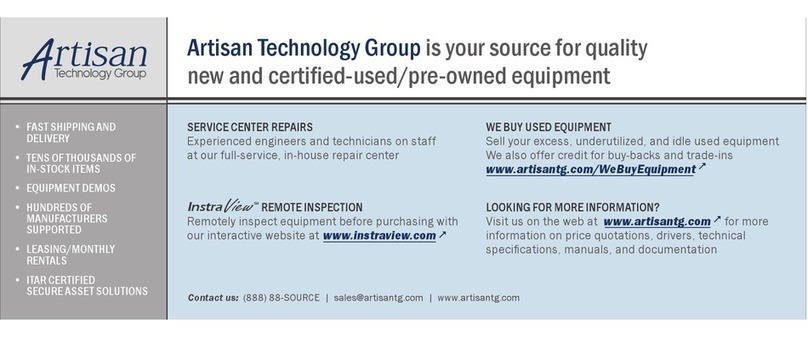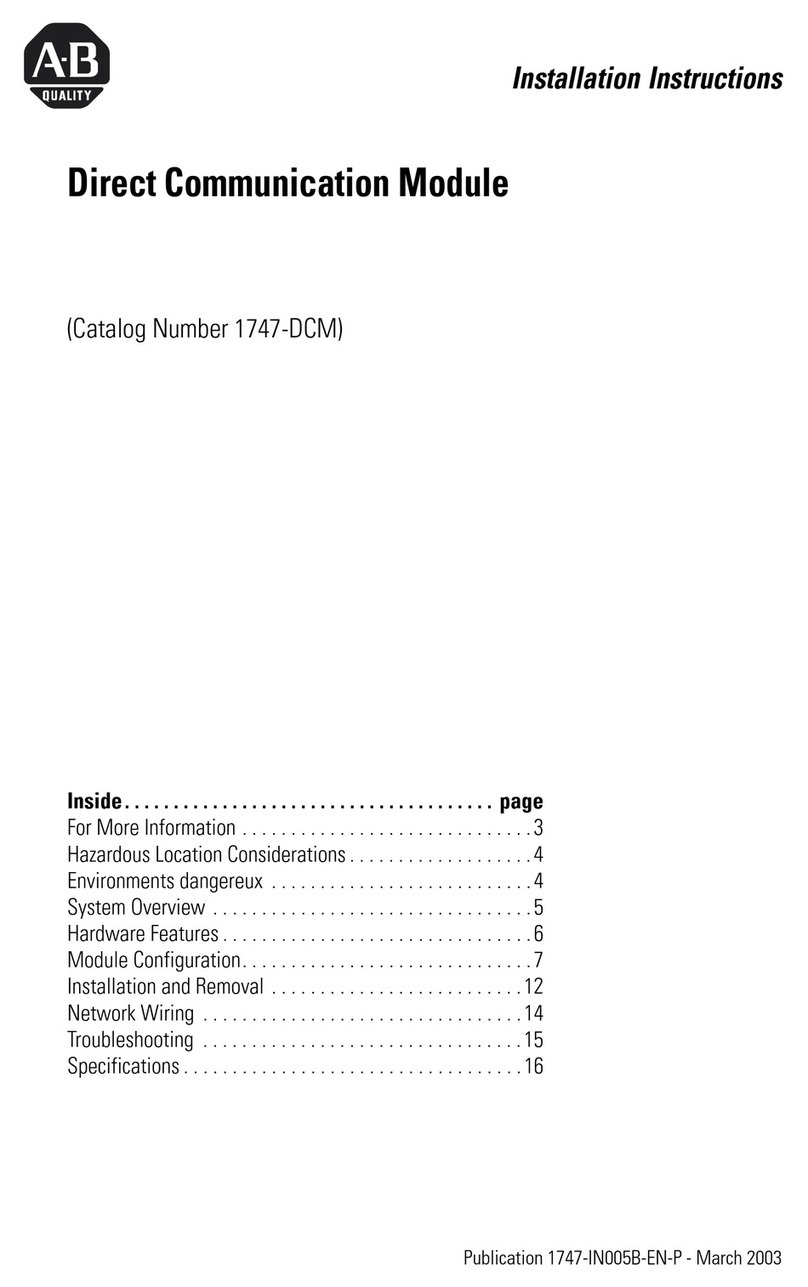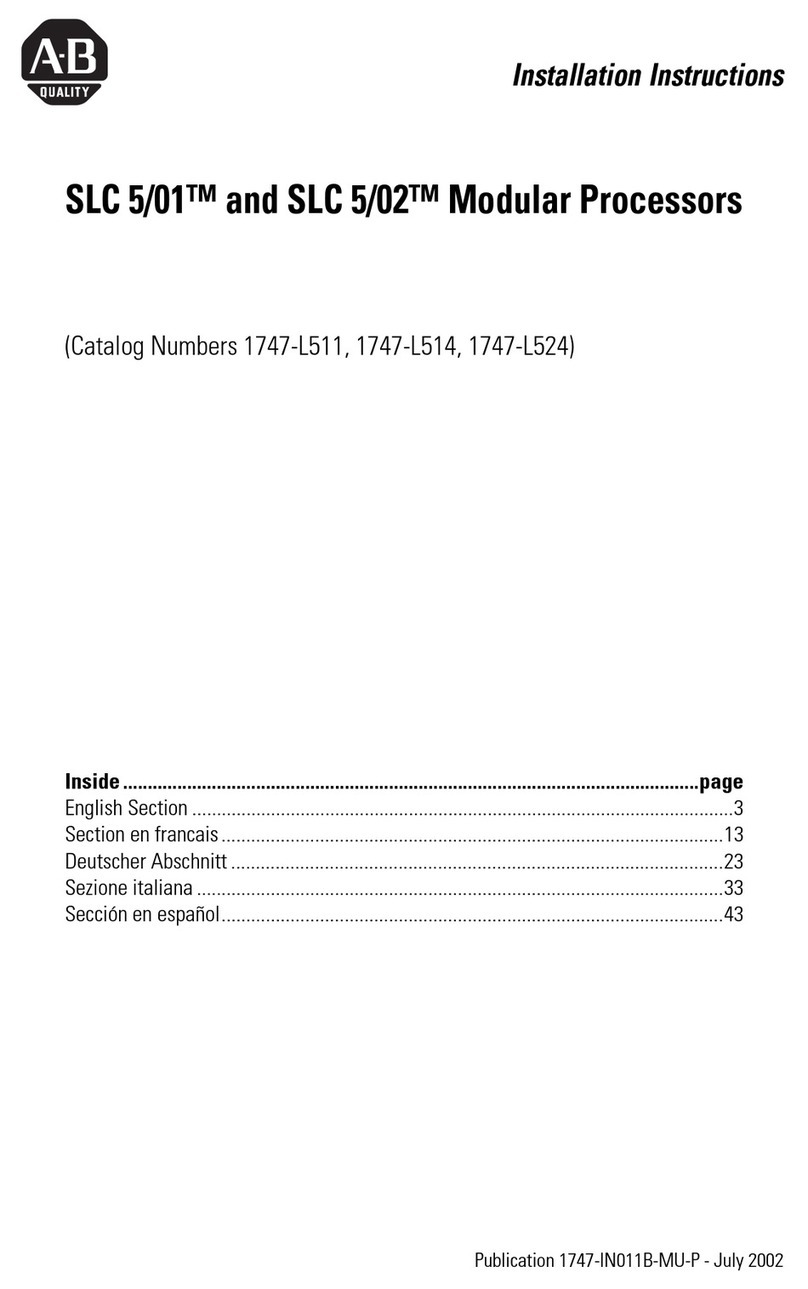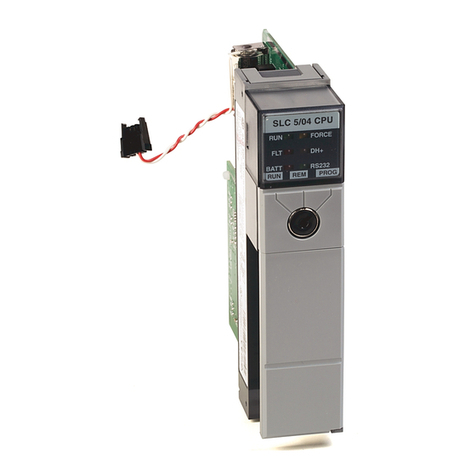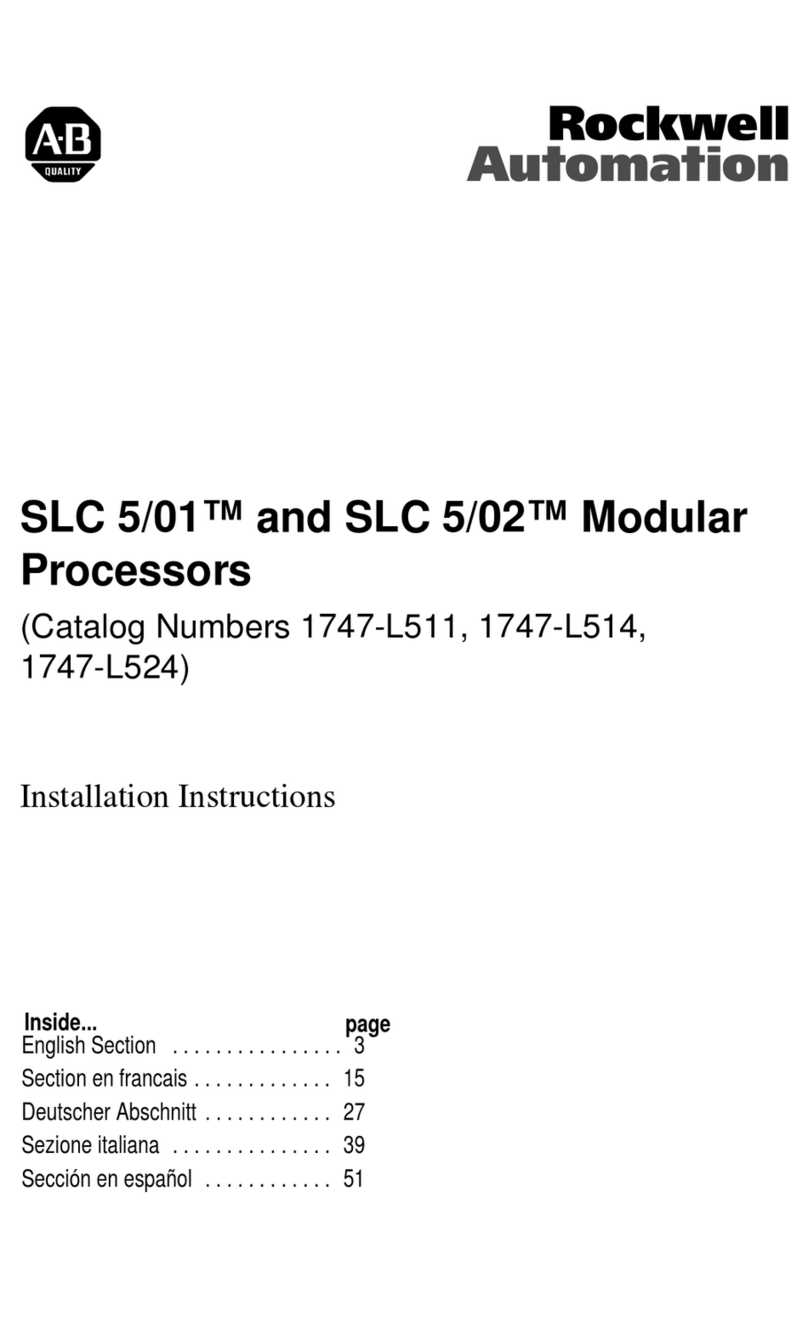
Table of Contentsii
Step 10 - Connecting to the Field Wiring Arms 432. . . . . . . . . . . . . . .
Step 11 - Connecting Power to the Processor or Power Supply 437
. . .
Step 12 - Connecting the Industrial Terminal 442
. . . . . . . . . . . . . . . .
Master Control Relay 443
. . . . . . . . . . . . . . . . . . . . . . . . . . . . . . . . .
Starting
Y
our Processor 51. . . . . . . . . . . . . . . . . . . . . . . . . . .
Chapter
Objectives
51. . . . . . . . . . . . . . . . . . . . . . . . . . . . . . . . . . .
Verify Your System's Addresses 51
. . . . . . . . . . . . . . . . . . . . . . . . .
Status Indicators for I/O Modules 53
. . . . . . . . . . . . . . . . . . . . . . . . .
Addressing Your Hardware 54
. . . . . . . . . . . . . . . . . . . . . . . . . . . . .
Before You Supply AC Power 518
. . . . . . . . . . . . . . . . . . . . . . . . . . .
Testing Output Devices 518
. . . . . . . . . . . . . . . . . . . . . . . . . . . . . . . .
Testing Input Devices 520
. . . . . . . . . . . . . . . . . . . . . . . . . . . . . . . . .
Maintaining and Troubleshooting Your Processor 61. . . . . . .
Chapter
Objectives
61. . . . . . . . . . . . . . . . . . . . . . . . . . . . . . . . . . .
General 61
. . . . . . . . . . . . . . . . . . . . . . . . . . . . . . . . . . . . . . . . . . .
Preventive Maintenance 61
. . . . . . . . . . . . . . . . . . . . . . . . . . . . . . .
Memory Organization 71. . . . . . . . . . . . . . . . . . . . . . . . . . . .
Chapter
Objectives
71. . . . . . . . . . . . . . . . . . . . . . . . . . . . . . . . . . .
Introduction 71
. . . . . . . . . . . . . . . . . . . . . . . . . . . . . . . . . . . . . . . .
Memory Areas 72
. . . . . . . . . . . . . . . . . . . . . . . . . . . . . . . . . . . . . .
Adjusting the Data Table 77
. . . . . . . . . . . . . . . . . . . . . . . . . . . . . . .
Expanding the Data Table Between 48 and 128 Words 77
. . . . . . . . .
Expanding the Data Table Between 130 and 256 Words 79
. . . . . . . .
User Program 711
. . . . . . . . . . . . . . . . . . . . . . . . . . . . . . . . . . . . . .
Message Storage 711
. . . . . . . . . . . . . . . . . . . . . . . . . . . . . . . . . . . .
Scan Theory 81. . . . . . . . . . . . . . . . . . . . . . . . . . . . . . . . . . .
Chapter
Objectives
81. . . . . . . . . . . . . . . . . . . . . . . . . . . . . . . . . . .
Scan Function 81
. . . . . . . . . . . . . . . . . . . . . . . . . . . . . . . . . . . . . .
Average Scan Time 83
. . . . . . . . . . . . . . . . . . . . . . . . . . . . . . . . . .
RelayLike Instructions 91. . . . . . . . . . . . . . . . . . . . . . . . . . .
Chapter
Objectives
91. . . . . . . . . . . . . . . . . . . . . . . . . . . . . . . . . . .
Programming Logic 91
. . . . . . . . . . . . . . . . . . . . . . . . . . . . . . . . . .
Bit
Examining
93. . . . . . . . . . . . . . . . . . . . . . . . . . . . . . . . . . . . . .
Examine On and Examine Off 94
. . . . . . . . . . . . . . . . . . . . . . . . . . .
Bit
Controlling
95. . . . . . . . . . . . . . . . . . . . . . . . . . . . . . . . . . . . . .
Output Energize 95
. . . . . . . . . . . . . . . . . . . . . . . . . . . . . . . . . . . . .
Output
Latch/Unlatch
96. . . . . . . . . . . . . . . . . . . . . . . . . . . . . . . . .
Branching Instructions 98
. . . . . . . . . . . . . . . . . . . . . . . . . . . . . . . .

